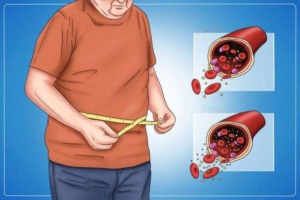Sea buckthorn has hypoglycemic potential. We carried out a randomized, double-blinded, two-way crossover study to discover its effects on glucose in people with impaired glucose regulation (IGR).
According to the final data, the detection rate of IGR was 32.4% (45/139). Considering that IGR contributes to a high risk of type 2 diabetes and other metabolic diseases, it is crucial to investigate more effective prevention strategies.
In the present study, consumption of 90 mL sea buckthorn fruit puree for 35 days led to fasting plasma glucose (FPG) tendency to decrease in people with IGR. Still, it did not affect the postprandial plasma glucose (PPG) or glycated serum protein (GSP).
In this study, we found that there was a small but significant decrease in FPG (−0.1 mmol/L; p = 0.002) after the inclusion of a certain amount of air-dried sea buckthorn (equivalent to 100 g/day fresh berries) for 33–35 days in the diet of 110 overweight and obese women.
In another study, after a four-week treatment period (100–200 mg/kg/day), the FPG of diabetic patients was significantly reduced in the sea buckthorn seed protein and sea buckthorn polysaccharide group compared with the module control group. In contrast, sea buckthorn procyanidins (SPR) showed no effect.
Administration of flavonoids from sea buckthorn pomace for four weeks also resulted in significantly hypoglycemic effects in the ICR group with alloxan-induced diabetes, even in the low dose group (3.0 mg/kg/day). It showed that a middle or high dose of sea buckthorn fruit oil (200 or 300 mg/kg/day) could lower the FPG at a rate of 10.47% and 13.79%, respectively.
 Prior research suggested that sea buckthorn and its extracts might be hypoglycemic. Protein in sea buckthorn is a high-quality essential and semi-essential amino acid resource.
Prior research suggested that sea buckthorn and its extracts might be hypoglycemic. Protein in sea buckthorn is a high-quality essential and semi-essential amino acid resource.
Another study confirmed an increase of hypoglycemic-related beneficial bacteria (Bifidobacterium and Lactobacillus) in diabetic mice supplemented with sea buckthorn seed protein. It is due to the higher concentrations of short-chain fatty acids and lower pH produced by sea buckthorn seed protein metabolism.
An in vitro experiment conducted in insulin-resistant HepG2 cells revealed that the sea buckthorn fruit oil rich in palmitoleic acid could increase the expression of glucose transporter type 4 through the activation of the PI3K/Akt signaling pathway.
In addition to the macronutrients mentioned above, evidence accumulated over the years indicates that biologically active substances rich in sea buckthorn may also play an important role, especially polyphenols. The mechanisms include inhibiting glucose absorption, stimulating insulin secretion and activation of insulin receptors, modulation of hepatic glucose output, etc.
Based on these studies, abundant unsaturated fatty acids, such as palmitoleic acid, and flavonoids in sea buckthorn may explain their positive role in hypoglycemic.
Our study also showed that four weeks’ treatment of sea buckthorn fruit oil improved the oral glucose tolerance test in T2DM SD rats in a dose-dependent manner. A study based on ten healthy volunteers consuming one control meal and three experimental meals with dried and crushed whole sea buckthorn berries and supercritical CO2 extract (oil-free), respectively, suggested that dinner with dried and crushed whole berries stabilize postprandial hyperglycemia.
Currently, there are few studies concerning the effect of sea buckthorn on HbA1c or GSP, which reflects the average PG level over three months or 2–3 weeks, respectively. 30 type 1 diabetic children were treated with a dietary supplement containing blueberry and sea buckthorn for two months. These materials significantly lowered their levels of HbA1c.
Previous studies indicated that berries might help improve appetite control due to their fiber content, which facilitates weight management. An increased desire for something sweet was observed in the study after a test meal containing added sucrose and sea buckthorn.

Leave A Comment